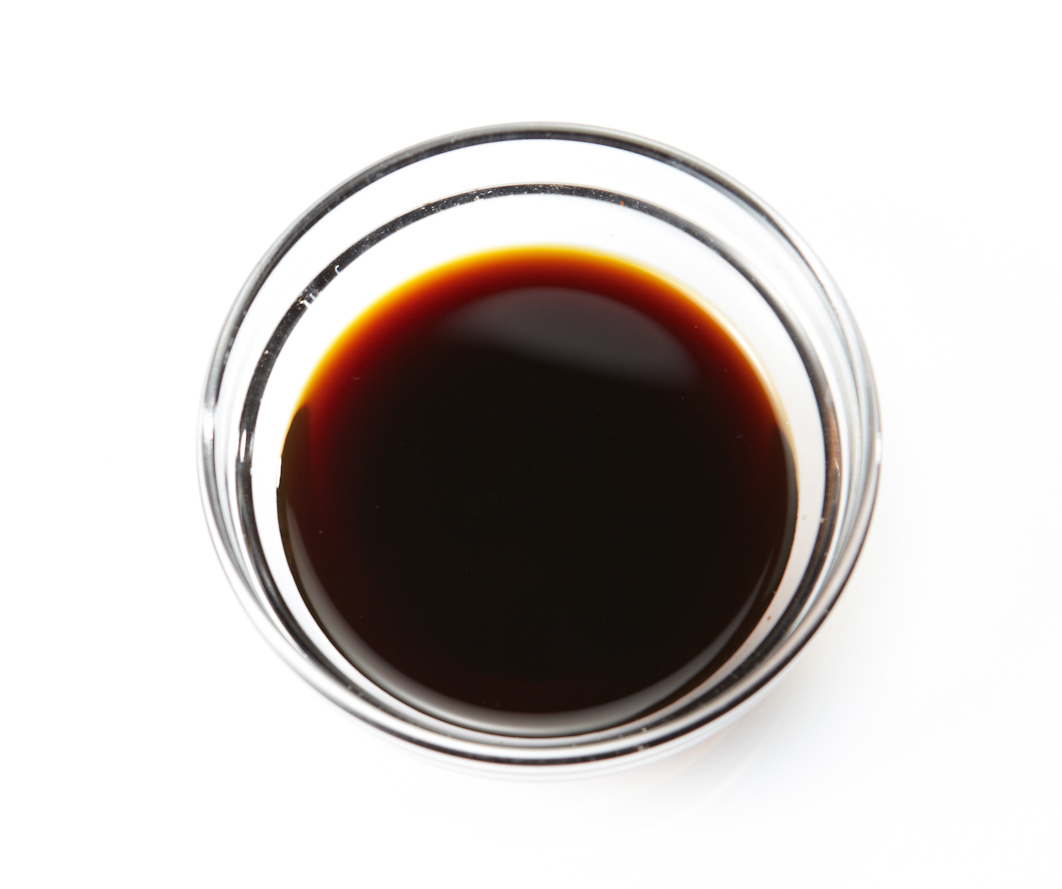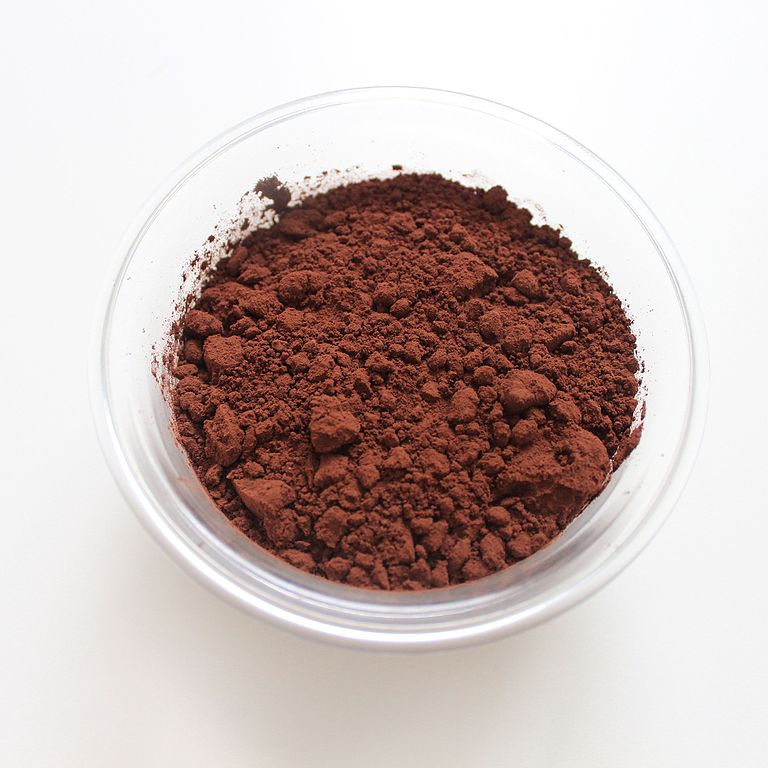Soy Sauce vs. Cocoa Powder
Nutrition comparison of Soy Sauce and Cocoa Powder
Ever wonder how your favorite foods stack up against each other in terms of nutrition?
We compared the nutritional contents of
soy sauce
versus
cocoa powder
(100g each)
below using 2020 USDA and NIH data[1].
For a quick recap of significant nutrients and differences in soy sauce and cocoa powder:
- Both cocoa powder and soy sauce are high in potassium and protein.
- Cocoa powder has more thiamin.
- Cocoa powder is an excellent source of calcium, dietary fiber and iron.
USDA sources for nutritional information: Soy Sauce (Soy sauce made from soy and wheat (shoyu)) and Cocoa Powder (Cocoa, dry powder, unsweetened) . Have a correction or suggestions? Shoot us an email.
Calories and Carbs
calories
Cocoa powder is high in calories and soy sauce has 77% less calories than cocoa powder - cocoa powder has 228 calories per 100 grams and soy sauce has 53 calories.
For macronutrient ratios, soy sauce is much heavier in protein, lighter in carbs and lighter in fat compared to cocoa powder per calorie. Soy sauce has a macronutrient ratio of 56:34:9 and for cocoa powder, 18:54:29 for protein, carbohydrates and fat from calories.
Macro Ratios from Calories:
| Soy Sauce | Cocoa Powder | |
|---|---|---|
| Protein | 56% | 18% |
| Carbohydrates | 34% | 54% |
| Fat | 9% | 29% |
| Alcohol | ~ | ~ |
carbohydrates
Cocoa powder is high in carbohydrates and soy sauce has 91% less carbohydrates than cocoa powder - cocoa powder has 57.9g of total carbs per 100 grams and soy sauce has 4.9g of carbohydrates.
dietary fiber
Cocoa powder is an excellent source of dietary fiber and it has 45 times more dietary fiber than soy sauce - cocoa powder has 37g of dietary fiber per 100 grams and soy sauce has 0.8g of dietary fiber.
sugar
Cocoa powder and soy sauce contain similar amounts of sugar - cocoa powder has 1.8g of sugar per 100 grams and soy sauce has 0.4g of sugar.
Protein
protein
Both cocoa powder and soy sauce are high in protein. Cocoa powder has 141% more protein than soy sauce - cocoa powder has 19.6g of protein per 100 grams and soy sauce has 8.1g of protein.
Fat
saturated fat
Cocoa powder is high in saturated fat and soy sauce has 99% less saturated fat than cocoa powder - cocoa powder has 8.1g of saturated fat per 100 grams and soy sauce has 0.07g of saturated fat.
Vitamins
Vitamin E
Cocoa powder and soy sauce contain similar amounts of Vitamin E - cocoa powder has 0.1mg of Vitamin E per 100 grams and soy sauce does not contain significant amounts.
Vitamin K
Cocoa powder and soy sauce contain similar amounts of Vitamin K - cocoa powder has 2.5ug of Vitamin K per 100 grams and soy sauce does not contain significant amounts.
The B Vitamins
Cocoa powder has more thiamin. Both soy sauce and cocoa powder contain significant amounts of riboflavin, niacin, pantothenic acid, Vitamin B6 and folate.
| Soy Sauce | Cocoa Powder | |
|---|---|---|
| Thiamin | 0.033 MG | 0.078 MG |
| Riboflavin | 0.165 MG | 0.241 MG |
| Niacin | 2.196 MG | 2.185 MG |
| Pantothenic acid | 0.297 MG | 0.254 MG |
| Vitamin B6 | 0.148 MG | 0.118 MG |
| Folate | 14 UG | 32 UG |
Minerals
calcium
Cocoa powder is an excellent source of calcium and it has 288% more calcium than soy sauce - cocoa powder has 128mg of calcium per 100 grams and soy sauce has 33mg of calcium.
iron
Cocoa powder is an excellent source of iron and it has 856% more iron than soy sauce - cocoa powder has 13.9mg of iron per 100 grams and soy sauce has 1.5mg of iron.
potassium
Both cocoa powder and soy sauce are high in potassium. Cocoa powder has 250% more potassium than soy sauce - cocoa powder has 1524mg of potassium per 100 grams and soy sauce has 435mg of potassium.
Omega-3 and Omega-6
omega 6s
Comparing omega-6 fatty acids, both soy sauce and cocoa powder contain significant amounts of linoleic acid.
| Soy Sauce | Cocoa Powder | |
|---|---|---|
| linoleic acid | 0.234 G | 0.44 G |
| Total | 0.234 G | 0.44 G |
Customize your serving size
The comparison below is by weight, but sometimes 100g isn't that intuitive of a measurement for food. View a custom portion comparison (e.g. cups, oz, package).
You can try adding or subtracting the amount of either Soy Sauce or Cocoa Powder .
Note: The specific food items compared are: Soy Sauce (Soy sauce made from soy and wheat (shoyu)) and Cocoa Powder (Cocoa, dry powder, unsweetened) .
Soy Sauce g
()
|
Daily Values (%) |
Cocoa Powder g
()
|
|||||
|---|---|---|---|---|---|---|---|
| KCAL % |
|
5% | calories | 5% |
|
KCAL % | |
| G % |
|
5% | carbohydrates | 5% |
|
G % | |
| G % |
|
5% | dietary fiber | 5% |
|
G % | |
| G | 5% | sugar | 5% | G | |||
| G % |
|
5% | total fat | 5% |
|
G % | |
| G % |
|
5% | saturated fat | 5% |
|
G % | |
| G | 5% | monounsaturated fat | 5% | G | |||
| G | 5% | polyunsaturated fat | 5% | G | |||
| G | 5% | trans fat | 5% | G | |||
| MG | 5% | cholesterol | 5% | MG | |||
| MG % |
|
5% | sodium | 5% |
|
MG % | |
| 5% | Vitamins and Minerals | 5% | |||||
| UG % |
|
5% | Vitamin A | 5% |
|
UG % | |
| MG % |
|
5% | Vitamin C | 5% |
|
MG % | |
| IU % |
|
5% | Vitamin D | 5% |
|
IU % | |
| MG % |
|
5% | calcium | 5% |
|
MG % | |
| MG % |
|
5% | iron | 5% |
|
MG % | |
| MG % |
|
5% | magnesium | 5% |
|
MG % | |
| MG % |
|
5% | potassium | 5% |
|
MG % | |
| MG % |
|
5% | thiamin (Vit B1) | 5% |
|
MG % | |
| MG % |
|
5% | riboflavin (Vit B2) | 5% |
|
MG % | |
| MG % |
|
5% | niacin (Vit B3) | 5% |
|
MG % | |
| MG % |
|
5% | Vitamin B6 | 5% |
|
MG % | |
| MG % |
|
5% | pantothenic acid (Vit B5) | 5% |
|
MG % | |
| UG % |
|
5% | folate (Vit B9) | 5% |
|
UG % | |
| UG % |
|
5% | Vitamin B12 | 5% |
|
UG % | |
| MG % |
|
5% | Vitamin E | 5% |
|
MG % | |
| UG % |
|
5% | Vitamin K | 5% |
|
UG % | |
| G % |
|
5% | protein | 5% |
|
G % | |
| UG % |
|
5% | biotin (Vit B7) | 5% |
|
UG % | |
| MG % |
|
5% | choline | 5% |
|
MG % | |
| MG % |
|
5% | chlorine | 5% |
|
MG % | |
| UG % |
|
5% | chromium | 5% |
|
UG % | |
| MG % |
|
5% | copper | 5% |
|
MG % | |
| UG % |
|
5% | fluoride | 5% |
|
UG % | |
| UG % |
|
5% | iodine | 5% |
|
UG % | |
| MG % |
|
5% | manganese | 5% |
|
MG % | |
| UG % |
|
5% | molybdenum | 5% |
|
UG % | |
| MG % |
|
5% | phosphorus | 5% |
|
MG % | |
| UG % |
|
5% | selenium | 5% |
|
UG % | |
| MG % |
|
5% | zinc | 5% |
|
MG % | |
| G | 5% | Water | 5% | G | |||
| G | 5% | Starch | 5% | G | |||
| G | 5% | Alcohol | 5% | G | |||
FAQ
Does cocoa powder or soy sauce contain more calories in 100 grams?Cocoa powder is high in calories and soy sauce has 80% less calories than cocoa powder - cocoa powder has 228 calories in 100g and soy sauce has 53 calories.
Is cocoa powder or soy sauce better for protein?
Both cocoa powder and soy sauce are high in protein. Cocoa powder has 140% more protein than soy sauce - cocoa powder has 19.6g of protein per 100 grams and soy sauce has 8.1g of protein.
Does cocoa powder or soy sauce have more carbohydrates?
By weight, cocoa powder is high in carbohydrates and soy sauce has 90% fewer carbohydrates than cocoa powder - cocoa powder has 57.9g of carbs for 100g and soy sauce has 4.9g of carbohydrates.
Does cocoa powder or soy sauce contain more calcium?
Cocoa powder is a rich source of calcium and it has 290% more calcium than soy sauce - cocoa powder has 128mg of calcium in 100 grams and soy sauce has 33mg of calcium.
Does cocoa powder or soy sauce contain more iron?
Cocoa powder is an abundant source of iron and it has 860% more iron than soy sauce - cocoa powder has 13.9mg of iron in 100 grams and soy sauce has 1.5mg of iron.
Does cocoa powder or soy sauce contain more potassium?
Both cocoa powder and soy sauce are high in potassium. Cocoa powder has 250% more potassium than soy sauce - cocoa powder has 1524mg of potassium in 100 grams and soy sauce has 435mg of potassium.

